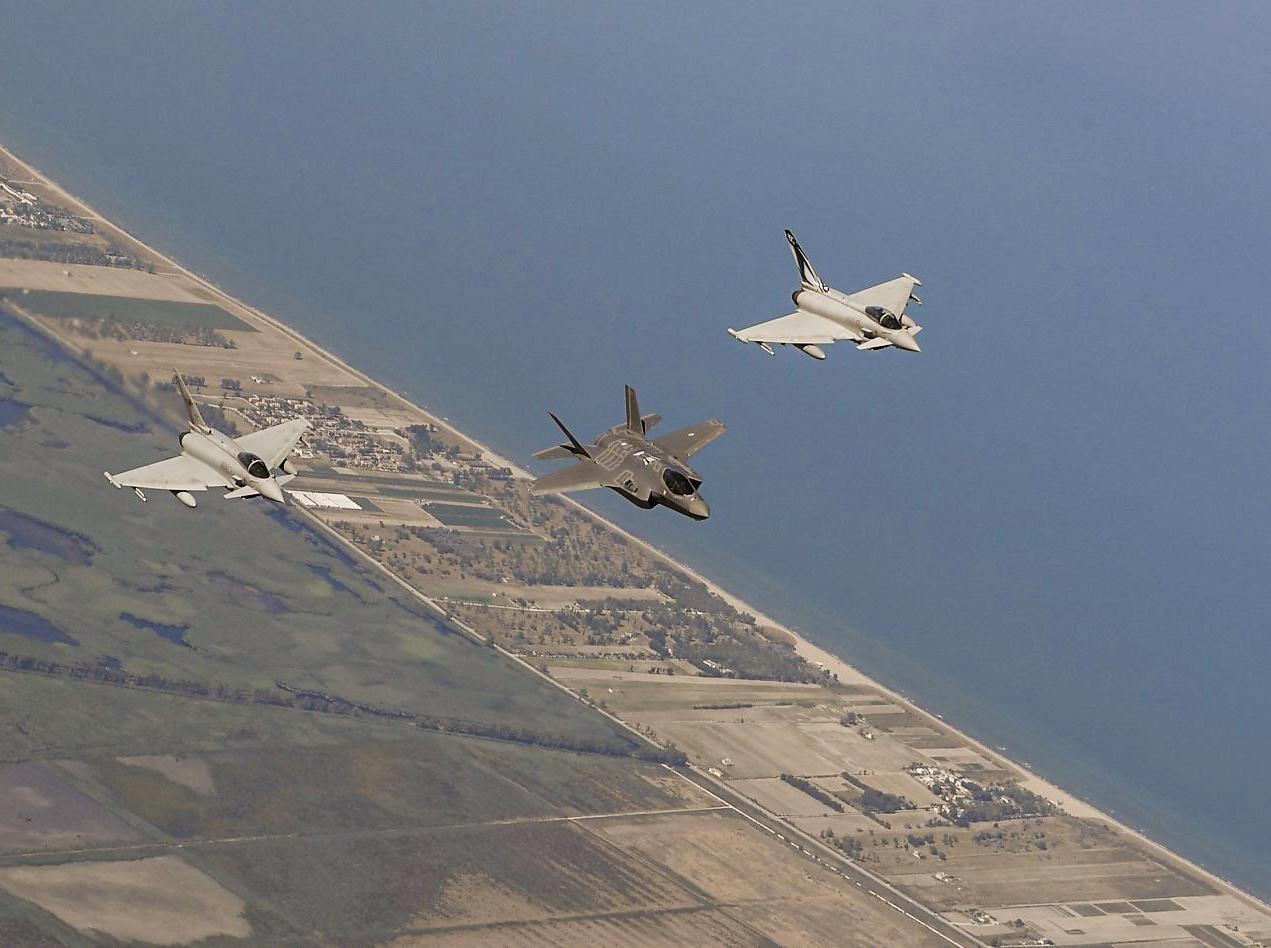RNAD has a new report on the current state of European Air Forces and how their contributions in future can affect NATO’s airpower.

Airpower is critical to improving NATO's defense and deterrence posture in response to Russia's aggressive actions and continued military modernization, as recognized in NATO's 2018 Joint Air Power Strategy. The capabilities of European air forces to defend allies in conflict are evolving, and the trend line in platform modernization is leading in the right direction, most critically with the introduction of fifth-generation aircraft. European allies are also beginning to invest more in personnel, training, and equipment availability. Taken together, these developments could decrease Russia's ability to achieve its operational and political-military objectives in a theater-wide conflict.
The authors—drawing from interviews, an expert roundtable, and relevant literature—assess the specific opportunities and challenges that European air forces need to address to position themselves as central contributors to NATO's deterrent posture at the vanguard of any foreseeable combat air campaign. Specifically, they focus on maximalist conditions—high-intensity operations that would require rapid and large-scale application of airpower, conducted in the European theater. Their analysis examines the capabilities of the 13 allied air forces in Europe capable of making the most substantial contribution to large-scale combat operations.

 www.rand.org
www.rand.org

Airpower is critical to improving NATO's defense and deterrence posture in response to Russia's aggressive actions and continued military modernization, as recognized in NATO's 2018 Joint Air Power Strategy. The capabilities of European air forces to defend allies in conflict are evolving, and the trend line in platform modernization is leading in the right direction, most critically with the introduction of fifth-generation aircraft. European allies are also beginning to invest more in personnel, training, and equipment availability. Taken together, these developments could decrease Russia's ability to achieve its operational and political-military objectives in a theater-wide conflict.
The authors—drawing from interviews, an expert roundtable, and relevant literature—assess the specific opportunities and challenges that European air forces need to address to position themselves as central contributors to NATO's deterrent posture at the vanguard of any foreseeable combat air campaign. Specifically, they focus on maximalist conditions—high-intensity operations that would require rapid and large-scale application of airpower, conducted in the European theater. Their analysis examines the capabilities of the 13 allied air forces in Europe capable of making the most substantial contribution to large-scale combat operations.
Key Findings
Russia is concerned about NATO's relative advantage in the air domain
- NATO's increased capabilities will become more pronounced in the next five years.
- Russia's investment in integrated air defense systems underscores its view of the importance of airpower.
European air forces currently have limited capabilities for the most-demanding high-intensity missions
- Contributions to previous allied and coalition air operations occurred in less contested operating environments.
- Of 1,900 combat aircraft, fewer than 100 are fifth generation.
- Vulnerability to advanced ground-based threats would constrain European air forces' fleets.
NATO's capabilities in a high-intensity conflict with Russia will improve with the introduction of hundreds of fifth-generation fighters during the 2020s
- Above and beyond the platform itself, investment in enhanced radars, advanced and long-range munitions, and secure communications links is needed.
- Uncertainties remain about which nations will invest in these technologies.
Integration of fifth-generation fighters with NATO's other air and joint forces is required to maximize combat potential
- Aircrews across NATO are becoming familiar with exploiting the F-35's unique capability to provide battlefield situational awareness in highly contested environments.
- Fourth-generation fighters remain important into the 2030s.
- European air forces without fifth-generation capabilities have an opportunity to join in the development of emerging operational concepts.
European air forces struggle to maintain high levels of readiness
- Most air forces maintain approximately half of their existing fleets at mission-capable status.
- Maintenance costs, wear and tear, and challenges in the spare parts pipelines constrain fourth-generation aircraft availability.
- Early challenges within the F-35 program require continued attention.
- Insufficient airspace for exercises and the number of pilots and skilled maintainers are limiting factors.
Recommendations
- Prioritize investments that allow fourth-generation aircraft and other platforms to complement the F-35's unique capabilities. Fourth-generation aircraft and ground and maritime systems must be able to receive targeting information from the F-35. Other areas of need include upgrading aircraft radars and stockpiling munitions.
- Prepare fifth-generation fleets across NATO to undertake operations within the range of Russia's most sophisticated air defenses, and emphasize the suppression of enemy air defenses mission. Trainer aircraft should simulate the capabilities of the F-35 while exercises should feature realistic threat emitters and electronic jammers. Operational concepts for tracking, engaging, and destroying moving armored formations should be developed.
- Institute routine combined training and exercises for multinational formations, including with the F-35. For operational cohesion, NATO air forces should pursue synthetic training, establish an Air Warfare Center, and leverage such events as U.S. Red Flag.
- Commit to a greater level of public objectives and transparency for combat aircraft availability. To improve availability levels, NATO air forces should invest in improving spare parts allocation and maintenance timelines for both the F-35 and fourth-generation fleets.
- Update national and F-35 program policies and procedures to allow U.S. and European air forces to enhance collaboration for training and operations. Senior-level attention will be needed to release an F-35 interoperability policy on information sharing that balances legitimate security needs without unduly restricting cooperation. Collaboration might be facilitated through standing liaisons at the squadron or group levels.

European Contributions to NATO's Future Combat Airpower
European air forces currently have limited capabilities for defending allies in high-intensity conflict. However, Europe's airpower is trending in the right direction, especially with the introduction of fifth-generation aircraft.


